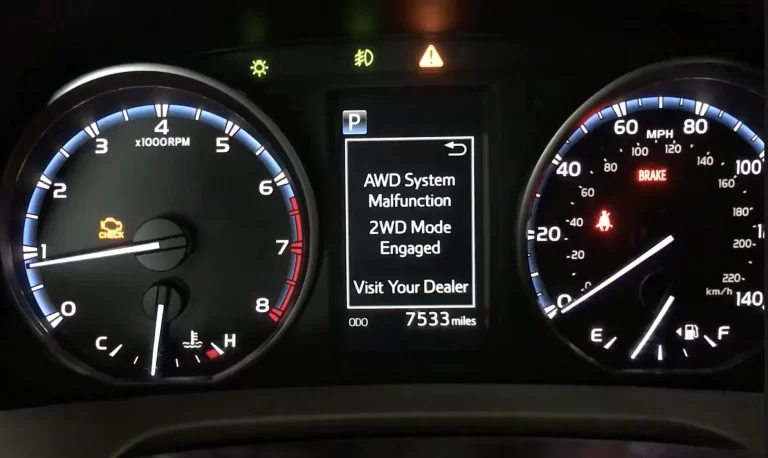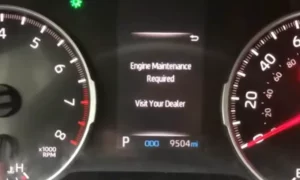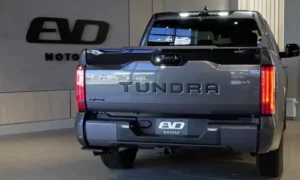When that dreaded “AWD System Malfunction: 2WD Mode Engaged” warning lights up your Toyota’s dashboard, it’s enough to make your heart sink. Your all-wheel drive capability has just switched to front-wheel drive, and you’re left wondering what went wrong and how serious the problem might be. The good news? Many causes are simpler than you might think, and some solutions won’t break the bank.
What Does This Warning Actually Mean?
Toyota’s AWD systems are designed to automatically distribute power between all four wheels based on driving conditions. When the system detects a problem, it switches to 2WD mode as a protective measure.
This warning message indicates that your vehicle’s AWD system has encountered an issue and has defaulted to 2WD (typically front-wheel drive) operation. While you can still drive the vehicle, you’ll be missing the traction benefits of all-wheel drive until the problem is resolved.
Common Causes of Toyota AWD System Malfunction
Battery and Electrical Issues
Battery problems are surprisingly common culprits behind AWD system failures. Your Toyota’s AWD components require consistent voltage to function properly.
A weak or failing battery often triggers this warning because the system’s sensors and actuators need stable voltage (ideally 12.6V or higher). When voltage drops below 12V, the system may trigger fault codes and disable AWD functionality.
Simple checks you can perform:
- Inspect battery terminals for corrosion
- Measure battery voltage (should be above 12.4V when engine is off)
- Check for loose connections
In many cases, simply recharging a depleted battery can resolve the issue entirely, as one 2017 RAV4 owner discovered.
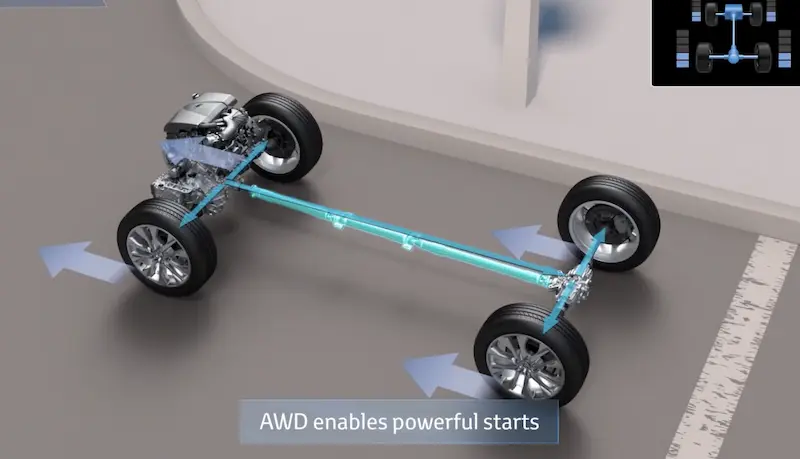
Sensor Failures
Modern AWD systems rely on numerous sensors to function correctly. When these sensors fail, the system enters fail-safe mode.
Wheel Speed Sensors
Each wheel has a sensor monitoring its rotational speed. The AWD system uses this data to distribute torque properly. When these sensors fail, the system can’t accurately determine wheel speeds and defaults to 2WD.
Common wheel speed sensor issues include:
- Physical damage to sensors or wiring
- Contamination from road debris
- Internal electrical shorts
- Broken wires or connections
Transmission Range Sensor Problems
The transmission range sensor tells your vehicle what gear you’ve selected. When this sensor malfunctions, it may erroneously signal that you’re in neutral or park while driving, confusing the AWD system and causing it to disengage.
This issue often appears alongside transmission-related symptoms like difficulty shifting or erratic transmission behavior.
Engine-Related Issues
Interestingly, problems completely unrelated to your drivetrain can trigger AWD malfunctions.
Check Engine Light Connection
Did you know that your Toyota automatically disables AWD when the check engine light comes on? This happens even for minor issues like a loose gas cap or a faulty oxygen sensor.
One 2018 RAV4 owner shared on Reddit that they solved their AWD warning simply by tightening their fuel cap. This addressed an evaporative emissions leak that had triggered the check engine light.
If your check engine light is on simultaneously with the AWD warning, addressing the engine issue first may resolve both problems.
Mechanical Problems and Overheating
Sometimes the issue is mechanical rather than electrical.
Overheated AWD Components
Extreme driving conditions like towing heavy loads, aggressive driving, or operating in very high temperatures can cause the AWD system to overheat. Toyota’s system includes a thermal protection mode that will switch to 2WD to prevent damage.
Signs of overheating AWD components include:
- Groaning or clunking noises
- Warning message appearing after extended driving
- Issues occurring during towing or hill climbing
A Toyota Technical Service Bulletin for 2019-2020 RAV4 models specifically addresses overheating-related issues that cause noise and AWD malfunctions.
Low Differential or Transfer Case Fluid
Inadequate lubrication in your AWD components can cause increased friction, heat generation, and eventually system failure. Toyota specifies particular fluid types and service intervals for differential maintenance.
Diagnosing Your Toyota’s AWD Malfunction
Basic DIY Checks
Before heading to the mechanic, try these basic checks:
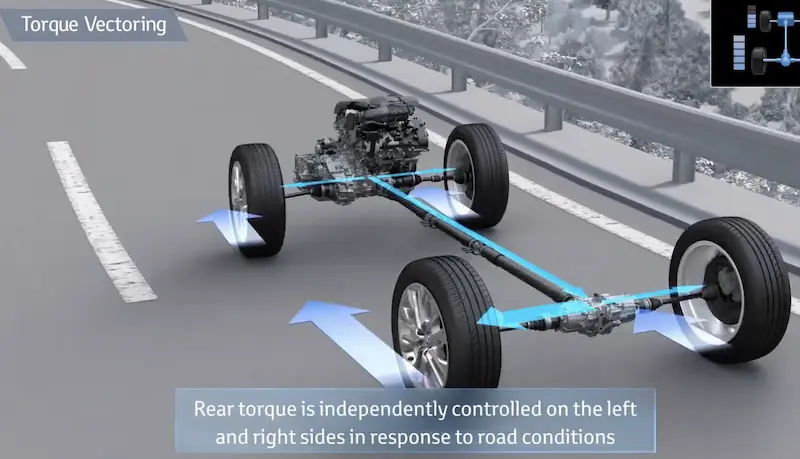
- Check your battery: Measure voltage and inspect terminals
- Inspect for visible damage: Look for obvious wiring issues or fluid leaks
- Scan for error codes: If you have an OBD-II scanner, check for specific trouble codes
- Reset the system: Sometimes disconnecting the battery for 15 minutes can clear transient errors
Common Diagnostic Trouble Codes
If you scan your vehicle, these codes often relate to AWD issues:
| Code | Description | Potential Fix |
|---|---|---|
| C0215 | Rear Speed Sensor Circuit Malfunction | Replace wheel speed sensor |
| P0705 | Transmission Range Sensor Circuit Error | Adjust or replace sensor |
| P0456 | Evaporative Emissions System Leak | Tighten gas cap, check EVAP system |
When Professional Diagnosis Is Needed
While basic checks might resolve simple issues, some problems require professional diagnosis using specialized equipment. A technician can:
- Use Toyota’s Techstream software for in-depth diagnostics
- Test individual sensors and actuators
- Perform live data monitoring of the AWD system
- Check for software updates related to AWD performance
Fixing Toyota AWD System Malfunctions
Simple Fixes You Can Try
- Battery reset: Disconnect the negative battery terminal for about 15 minutes, then reconnect. This often clears temporary electronic glitches.
- Address check engine light issues: If the check engine light is also on, fix those issues first. Sometimes something as simple as tightening your gas cap can resolve both warnings.
- Inspect fluid levels: Check your transfer case and differential fluid levels if you’re comfortable doing so.
Professional Repairs and Costs
For more complex issues, professional repairs may be necessary. Here’s what you might expect to pay:
| Component | Parts Cost | Labor Cost | Total |
|---|---|---|---|
| Wheel Speed Sensor | $80-$150 | $100-$200 | $180-$350 |
| Transmission Range Sensor | $120-$300 | $150-$250 | $270-$550 |
| Battery Replacement | $150-$300 | $20-$50 | $170-$350 |
| Transfer Case Assembly | $2,000-$4,500 | $500-$1,000 | $2,500-$5,500 |
Toyota dealerships can also perform ECU reprogramming to address software-related faults, which is particularly important for newer models with more sophisticated AWD systems.
Preventive Maintenance to Avoid AWD System Failures
Regular maintenance significantly reduces your risk of AWD system malfunctions:
Battery Health
- Test your battery regularly, especially before winter
- Keep terminals clean and connections tight
- Replace batteries older than 4-5 years, even if they seem fine
Fluid Maintenance
Following Toyota’s recommended service schedule for differential and transfer case fluid changes helps prevent mechanical failures. These are often overlooked maintenance items that can lead to expensive repairs if neglected.
Early Warning Signs to Watch For
Pay attention to these early indicators of potential AWD issues:
- Unusual noises when cornering
- Vibrations during acceleration
- Hesitation when driving on slippery surfaces
- Difficulty accelerating from a stop
Addressing these symptoms early can prevent more serious problems.
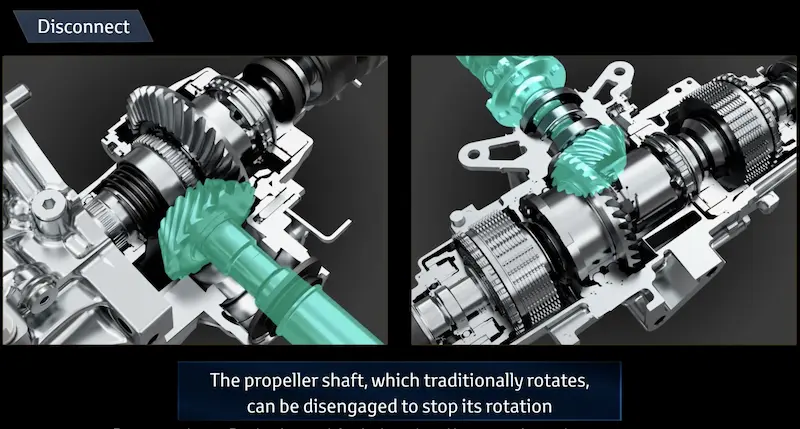
Driving Safely With an AWD Malfunction
If you’re stuck with the “AWD System Malfunction: 2WD Mode Engaged” warning and can’t get it fixed immediately, adjust your driving accordingly:
Temporary Driving Adjustments
- Avoid off-roading or driving in severe weather if possible
- Take corners more slowly, especially in wet conditions
- Leave extra stopping distance on slippery roads
- Avoid aggressive acceleration which may cause wheel spin
While 2WD mode is perfectly safe for normal driving conditions, you’ll need to be more cautious in situations where you’d typically rely on AWD traction.
When to Stop Driving
While most AWD malfunctions don’t prevent you from reaching your destination safely, you should stop driving immediately if:
- You notice grinding or loud mechanical noises
- The vehicle handles erratically or unpredictably
- Multiple warning lights appear on your dashboard
- You smell burning odors from the drivetrain area
Toyota Models Commonly Affected
This AWD system malfunction can affect any Toyota with all-wheel drive capability, but it’s particularly common in:
- RAV4 (especially 2019-2020 models)
- Highlander
- Venza
- 4Runner with part-time 4WD systems
- Sienna AWD variants
Each model uses slightly different AWD technology, but the warning messages and many of the causes remain similar across the Toyota lineup.
Toyota’s AWD Technology Evolution
Toyota has continuously evolved their AWD systems over the years:
- Earlier RAV4 models used a relatively simple AWD system that engaged the rear wheels when front wheel slip was detected
- Newer models often feature Dynamic Torque Vectoring AWD that can send power to individual wheels as needed
- Hybrid models use a completely different system with an electric motor driving the rear wheels
This evolution means that diagnosis and repair approaches may differ based on your specific model and year.
Conclusion
While seeing the “Toyota AWD System Malfunction: 2WD Mode Engaged” warning can be alarming, it’s often resolved through straightforward fixes. From simple battery issues to sensor replacements, most cases don’t require extensive repairs.
By understanding the common causes and following the diagnostic steps outlined here, you can approach this issue methodically and get your Toyota’s AWD system back in working order. Remember that continuing to drive in 2WD mode is generally safe for everyday conditions while you arrange for proper diagnosis and repair.

